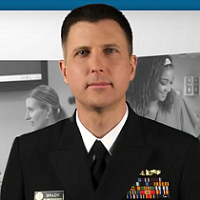
 By Jeffrey Brady, MD, MPH, Director, AHRQ Center for Quality Improvement and Patient Safety &
By Jeffrey Brady, MD, MPH, Director, AHRQ Center for Quality Improvement and Patient Safety &
Gopal Khanna, MBA, Director of AHRQ
Twitter: @AHRQNews
Each year an estimated 1 in 20 U.S. adults experiences missed, delayed, or incorrect diagnoses. Of the estimated 12 million Americans impacted, 4 million are believed to suffer serious harm. Diagnostic errors contribute to about 10 percent of patient deaths. They exact a painful financial toll as well. They are the single greatest source of medical malpractice claims, with an estimated cost of well over $100 billion a year, while the human cost is incalculably higher.
Among a clinician’s long list of responsibilities, perhaps none is more consequential than the act of diagnosis. The initial determination of a patient’s condition sets in motion a series of steps that may include life-altering tests, referrals, and treatments. A correct diagnosis starts a patient on the path toward all that modern medicine has to offer.
When errors occur, however, the consequences may range from merely wasted time and money, to a patient who becomes sicker or is injured as a result. In worst cases, diagnostic error can directly lead to an otherwise preventable death.
Diagnostic error, regardless of its cause, is a serious and complex problem that demands attention.
The National Academy of Medicine, in its landmark 2015 Improving Diagnosis in Heath Care report, attributed diagnostic errors to many causes, including poor communication between clinicians, patients, and families; a work system that does not optimally support the diagnostic process; limited feedback to clinicians about their own diagnostic accuracy; and a culture that may discourage transparency and disclosure, thereby impeding attempts to learn from errors and improve.
So, what are we going to do about it? In a recent AHRQ Views blog post, we discussed three critical initiatives that are front and center in today’s healthcare ecosystem. Reducing diagnostic errors is one of these initiatives (as well as establishing a data platform to support decision-making and addressing the needs of patients with multiple chronic conditions).
We believe improving diagnostic safety starts with the application of proven patient safety strategies, thoughtful integration of predictive analytics with clinician workflow, personalized and precision medicine, and new technologies like artificial intelligence. We already know that large gains can be made by focusing our research on the “Big 3” disease categories that account for half of all diagnostic errors that cause serious harm: vascular events, cancer, and infection. Those investments can then be leveraged to develop, test, and disseminate tools to apply promising new strategies at the point of care.
We’ve already begun this important work. Recognizing that all Americans can be affected by diagnostic errors, Congress authorized $2 million in FY 2019 for AHRQ to initiate a research agenda to understand and solve the problem. AHRQ’s recent funding opportunity announcements include a Patient Safety Learning Laboratory opportunity and a Health Services Research project that emphasize diagnostic excellence.
In addition, the recently released AHRQ QuestionBuilder App puts a technology-based solution in the hands of patients, helping them prepare and organize questions before a medical visit to help ensure a more accurate and timely diagnosis. AHRQ researchers have also produced improvement resources such as the guide for improving the laboratory testing process to address known challenges. Meanwhile, new research findings about better diagnosis hold the promise of more practical solutions to help patients and those who care for them. With these and other strategies, AHRQ has set a goal of reducing diagnostic errors by 1 million per year by 2025 – with a potential savings of $500 million annually.
We are all patients at one time or another, and we are all at risk of experiencing a diagnostic error. In fact, chances are that you will experience one in your lifetime. So we encourage you to join us and others who are working to address the ambitious activities we envision. Consider if any of your research and improvement ideas might qualify for an AHRQ grant. Follow and, if appropriate, get involved with the Society for Improving Diagnosis in Medicine, whose research and dissemination activities AHRQ has been proud to support since its inception. If you are a delivery system, tell us about your challenges, and about your needs that can be addressed through evidence-based research and approaches to improving practice.
Improving diagnosis is the next great frontier in the patient safety improvement movement. We’re laser-focused on solving this challenge, and we hope you will join us.
This article was originally published on AHRQ Views Blog and is republished here with permission.
